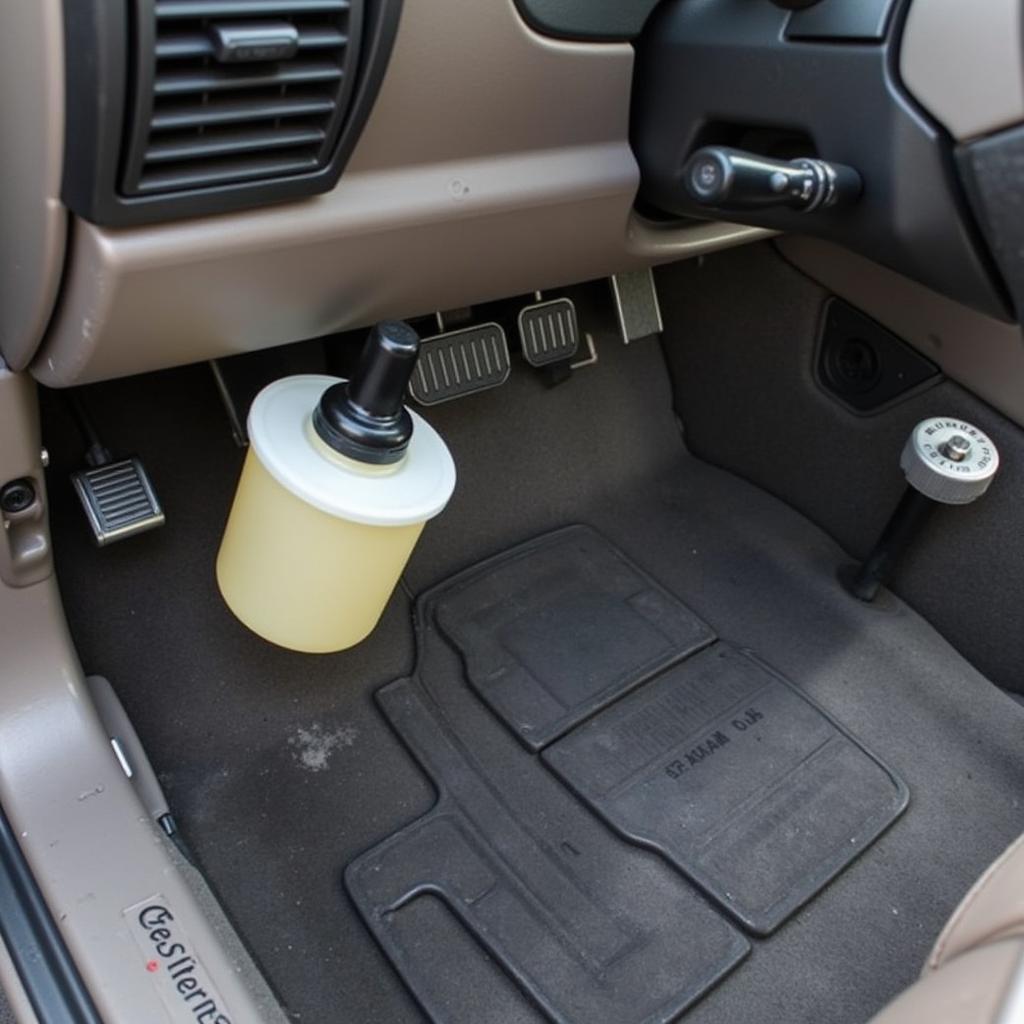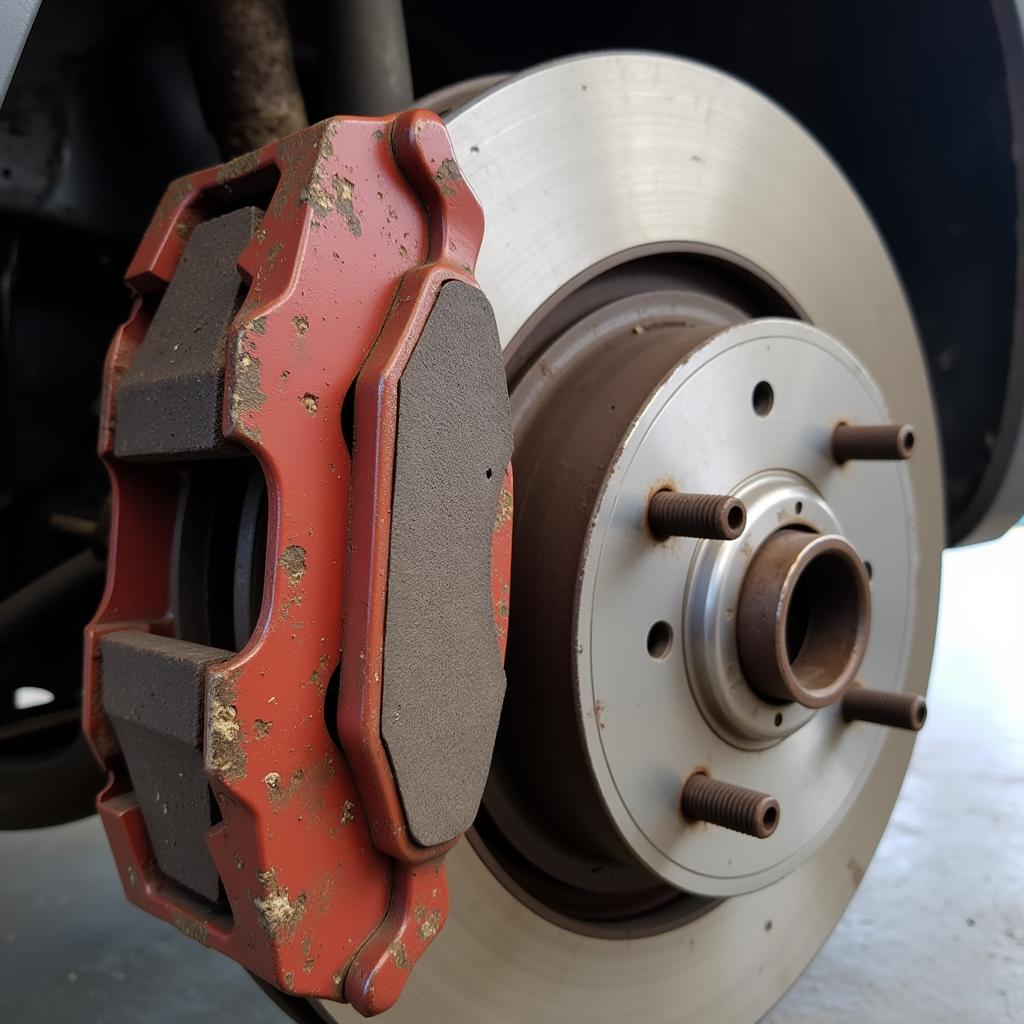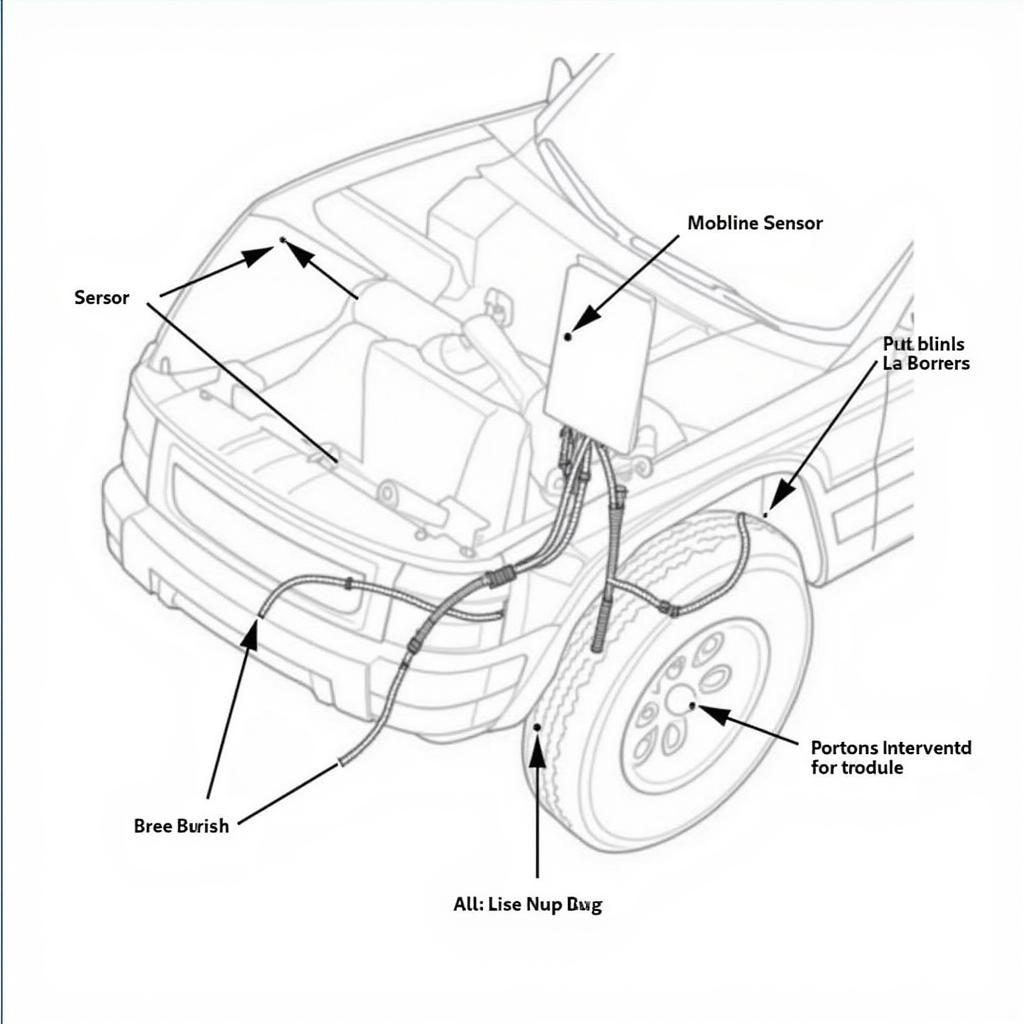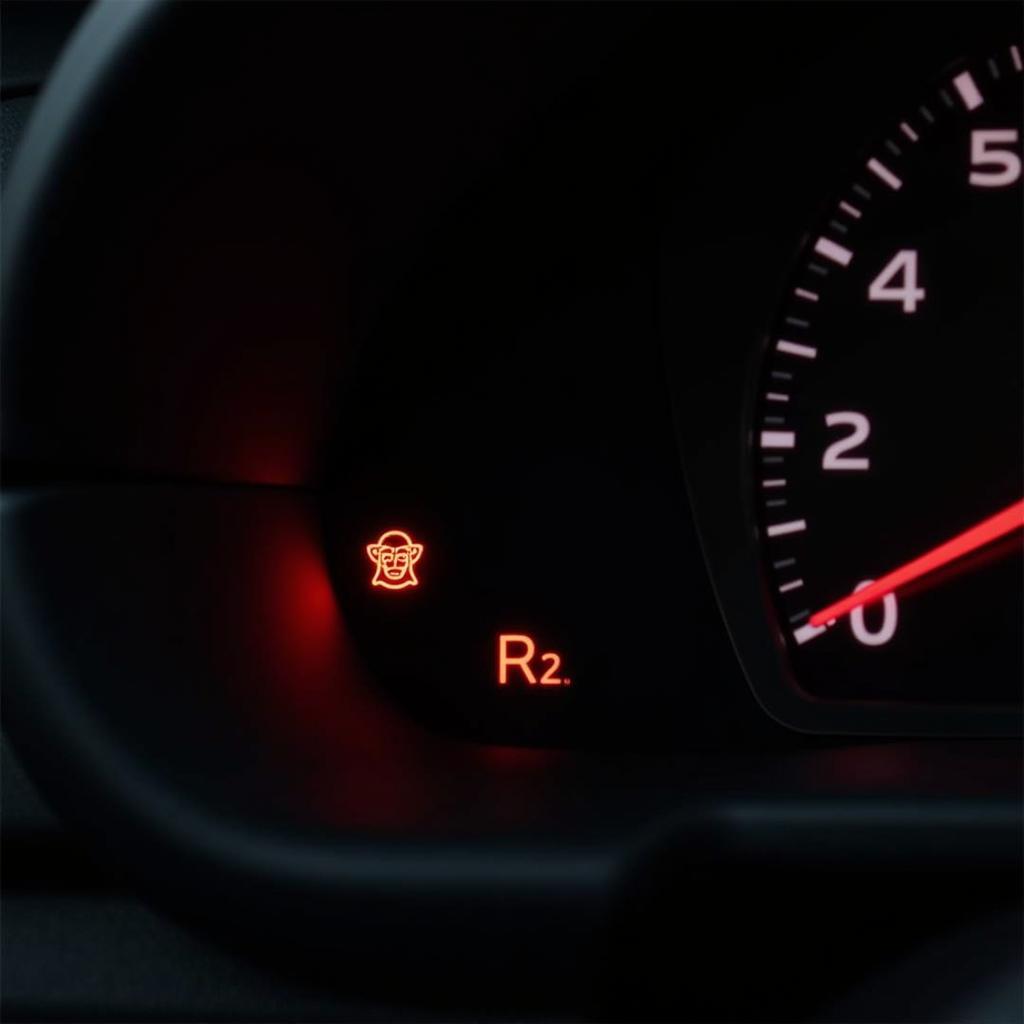The dreaded brake warning light on your 99 Grand Cherokee can be a source of anxiety. Understanding the causes and solutions can empower you to address the issue effectively, whether it’s a simple fix or requires professional diagnostics. This comprehensive guide will delve into the common reasons behind this warning light, offering step-by-step troubleshooting advice, and exploring the benefits of remote software solutions for modern vehicle diagnostics.
If the light illuminates steadily while driving, it could indicate low brake fluid, worn brake pads, or a problem with the ABS system. It’s crucial to address this promptly. For those unfamiliar with the system, you might want to check resources related to the brake warning light on a Jeep Cherokee for a broader understanding.
The first step in troubleshooting is to check your brake fluid level. Locate the brake fluid reservoir under the hood and ensure the fluid level is within the recommended range. If it’s low, adding brake fluid might temporarily resolve the issue, but it’s essential to determine the underlying cause of the leak.
Low brake fluid can lead to significant safety risks, such as reduced braking power and increased stopping distances. Regularly checking your brake fluid level is a simple yet crucial part of vehicle maintenance. You can find more information on this and other model years, such as the 2005 Jeep Grand Cherokee brake warning light, online.
 Low Brake Fluid Level in a 1999 Jeep Grand Cherokee
Low Brake Fluid Level in a 1999 Jeep Grand Cherokee
Next, inspect your brake pads for wear. Worn brake pads can trigger the warning light. If the pads are thin or worn down to the metal, they need to be replaced immediately. This is often a straightforward task, but some drivers prefer to have it done professionally. Sometimes, the warning light might be related to the parking brake system. A specialized parking brake warning light kit can be helpful in diagnosing these issues.
Common Causes of the Brake Warning Light
Several factors can trigger the brake warning light in a 99 Grand Cherokee. These range from minor issues like low brake fluid to more complex problems within the braking system. Understanding these causes can help you narrow down the problem.
Low Brake Fluid
As mentioned earlier, low brake fluid is a common culprit. A leak in the brake lines or a worn-out master cylinder can cause the fluid level to drop.
Worn Brake Pads
Brake pads are designed to wear down over time. When they become too thin, the warning light will activate to alert you to replace them.
Faulty ABS System
A malfunctioning Anti-lock Braking System (ABS) can also trigger the warning light. This could be due to a faulty sensor, a problem with the ABS module, or a wiring issue. For specific information on older models, you can check out resources related to the 1995 Grand Cherokee brake warning light.
 Worn Brake Pads on a 1999 Jeep Grand Cherokee
Worn Brake Pads on a 1999 Jeep Grand Cherokee
Remote Diagnostics and Programming
Modern vehicle diagnostics are evolving rapidly, and remote software solutions are playing a crucial role. These solutions allow technicians to diagnose and program vehicles remotely, offering faster and more efficient repairs. “Remote diagnostics offer a significant advantage in quickly identifying and resolving complex issues, especially with intricate systems like ABS,” says John Miller, Senior Automotive Diagnostic Technician at AutoFix Solutions.
Why is my brake warning light on?
The brake warning light can illuminate due to several reasons, including low brake fluid, worn brake pads, or a faulty ABS system. Addressing the issue promptly is vital for safety. It’s always best to consult a professional if you’re unsure about the cause. More information on 1999 Jeep Grand Cherokee brake warning light specifically is available online.
What should I do if my brake warning light comes on?
If your brake warning light comes on, the first step is to safely pull over and check your brake fluid level. If it’s low, add brake fluid and carefully drive to a mechanic. If the fluid level is okay, it could indicate worn brake pads or a problem with the ABS system, requiring professional attention.
Conclusion
The brake warning light on your 99 Grand Cherokee should never be ignored. By understanding the common causes and taking appropriate action, you can ensure your safety and prevent further damage to your vehicle. Leveraging remote diagnostics and programming can streamline the repair process, offering faster and more efficient solutions. Remember, regular maintenance and prompt attention to warning signs are crucial for safe and reliable vehicle operation.
 ABS System Diagram for a 1999 Jeep Grand Cherokee
ABS System Diagram for a 1999 Jeep Grand Cherokee
FAQ
- Can I drive with the brake warning light on? It’s not recommended. It indicates a potential problem with your braking system, which could compromise your safety.
- How much does it cost to fix a brake warning light issue? The cost varies depending on the underlying cause. It could range from a simple brake fluid top-up to more expensive repairs like replacing the ABS module.
- How often should I check my brake fluid level? It’s a good practice to check your brake fluid level at least once a month.
- What are the symptoms of a faulty ABS system? Symptoms can include a pulsating brake pedal, unusual noises during braking, or an illuminated ABS warning light.
- Can worn brake pads cause the brake warning light to come on? Yes, worn brake pads are a common trigger for the brake warning light.
- Is it safe to add brake fluid myself? Yes, you can add brake fluid yourself, but ensure you use the correct type of fluid recommended for your vehicle.
- How can remote diagnostics help with brake issues? Remote diagnostics can quickly identify the root cause of brake problems, saving time and potentially reducing repair costs.

